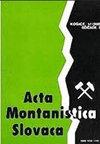使用纯颜色的植被指数来去除植被,否则大部分是单一材料的点云
IF 1.4
4区 地球科学
Q2 GEOSCIENCES, MULTIDISCIPLINARY
引用次数: 1
摘要
点云现在是许多工程学科中描述物体的标准方法,无论它们是人造物体,如结构、建筑物或各种类型的结构。通常使用的获取这类数据的方法包括地面、无人机或甚至航空摄影测量,其次是地面、无人机和航空扫描。在测量(通过扫描仪)或计算(从摄影测量)之后,点云经过广泛的处理,基本上将无序的点质量转换为可用的数据集。其中一个重要的步骤是去除代表障碍物和特征的点,特别是包括植被。这里有很多基于不同原理的过滤方法,适合应用于不同的场景。本文提出了一种基于可见光谱颜色原理,仅利用RGB系统颜色确定的植被指数来过滤点云的新方法。由于每个传感器在某种程度上都有对颜色的单独解释,因此不能假定它可以确定哪些是植被,哪些不是植被的特定边界。因此,提出利用均值聚类来简化算子的工作。该方法的设计也使得整个评估可以在免费的CloudCompare软件中实现。在三个具有不同地形和植被特征的地点对该方法进行了测试,证明了该方法对颜色信息(绿色)唯一标识植被的数据的适用性。选取的植被过滤器ExG、ExR、ExB和ExGr进行测试,其中ExG效果最好。K-means聚类可以帮助操作员更容易地区分植被和点云的其余部分,而不会影响结果的质量。使用免费下载和可用的CloudCompare软件,这种方法实际上是可以实现的。本文章由计算机程序翻译,如有差异,请以英文原文为准。
Using color-only vegetation indexes to remove vegetation from otherwise mostly mono-material point clouds
Point clouds are now a standard way of describing objects in many engineering disciplines, whether they are man-made objects such as structures, buildings, or various types of structures. Commonly used methods of acquiring such data include ground, UAV, or even aerial photogrammetry, followed by terrestrial, UAV, and aerial scanning.
After measurement (by the scanner) or calculation (from photogrammetry), the point cloud goes through extensive processing that essentially transforms the unordered mass of points into a usable data set. One of the important steps is removing points representing obstructing objects and features, including vegetation in particular. Here, many filtering methods based on different principles are available and suitable for application to different scenes.
This paper presents a new method of filtering point clouds based on the visible spectrum color principle using vegetation indexes determined from RGB system colors only. Since each sensor has to some extent, an individual interpretation of the colors, it cannot be assumed to determine specific boundaries of what is and is no longer vegetation. Therefore, it was proposed to use means clustering to simplify the operator's work. The method was also designed in such a way that the entire evaluation could be implemented in the freely available CloudCompare software.
The procedure was tested on three different sites with different terrain and vegetation characteristics showing, which demonstrated the applicability of this method to data where the color information (green) uniquely identifies vegetation. The selected vegetation filters ExG, ExR, ExB, and ExGr were tested, where ExG was the best. K-means clustering helps an operator to distinguish more easily between vegetation and the rest of the point cloud without compromising the quality of the result. The method is practically implementable using the freely downloadable and usable CloudCompare software.
求助全文
通过发布文献求助,成功后即可免费获取论文全文。
去求助
来源期刊

Acta Montanistica Slovaca
地学-地球科学综合
CiteScore
3.60
自引率
12.50%
发文量
60
审稿时长
30 weeks
期刊介绍:
Acta Montanistica Slovaca publishes high quality articles on basic and applied research in the following fields:
geology and geological survey;
mining;
Earth resources;
underground engineering and geotechnics;
mining mechanization, mining transport, deep hole drilling;
ecotechnology and mineralurgy;
process control, automation and applied informatics in raw materials extraction, utilization and processing;
other similar fields.
Acta Montanistica Slovaca is the only scientific journal of this kind in Central, Eastern and South Eastern Europe.
The submitted manuscripts should contribute significantly to the international literature, even if the focus can be regional. Manuscripts should cite the extant and relevant international literature, should clearly state what the wider contribution is (e.g. a novel discovery, application of a new technique or methodology, application of an existing methodology to a new problem), and should discuss the importance of the work in the international context.
 求助内容:
求助内容: 应助结果提醒方式:
应助结果提醒方式:


